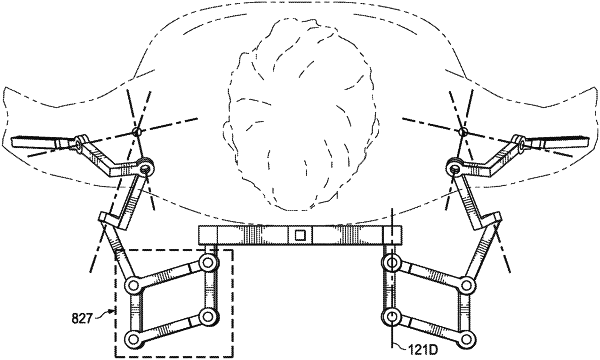| CPC A61H 1/02 (2013.01) [A61F 2/54 (2013.01); A61F 2/76 (2013.01); A61F 2/78 (2013.01); A61H 1/0274 (2013.01); A61H 1/0277 (2013.01); A61H 1/0281 (2013.01); B25J 9/0006 (2013.01); A61H 2201/1207 (2013.01); A61H 2201/1215 (2013.01); A61H 2201/1454 (2013.01); A61H 2201/1481 (2013.01); A61H 2201/165 (2013.01); A61H 2201/1614 (2013.01); A61H 2201/1616 (2013.01); A61H 2201/1619 (2013.01); A61H 2201/1621 (2013.01); A61H 2201/1638 (2013.01); A61H 2201/1676 (2013.01); A61H 2201/5058 (2013.01); A61H 2201/5061 (2013.01); A61H 2201/5064 (2013.01); A61H 2201/5069 (2013.01)] | 10 Claims |

|
1. A robotic shoulder joint comprising:
a first hinge joint with a first axis of rotation configured to be oriented towards a center of a human shoulder joint, the first axis of rotation to be aligned with a frontal axis of a user;
a second hinge joint coupled to the first hinge joint, with a second axis of rotation oriented between 55° and 75° from the first axis of rotation and configured to be oriented towards the center of the human shoulder joint;
a third hinge joint coupled to the second hinge joint, with a third axis of rotation oriented between 55° and 75° from the second axis of rotation and oriented between 50° and 80° from the first axis of rotation, configured to be oriented towards the center of the human shoulder joint; and
a fourth hinge joint, coupled to the third hinge joint, with a fourth axis of rotation to provide an additional degree of freedom to the robotic shoulder joint.
|